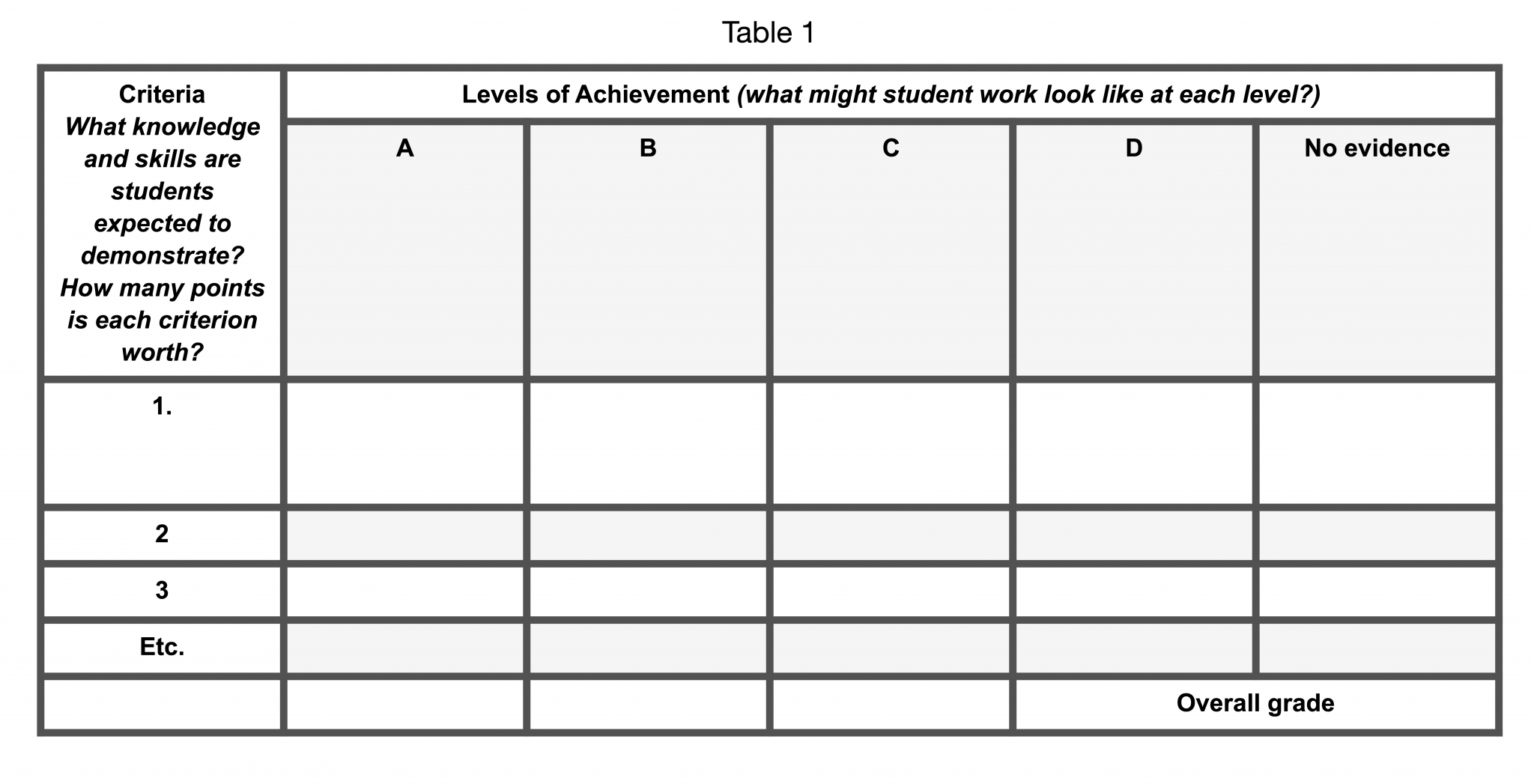Grading Smarter,Using Rubrics
Rote learning and studying just to get a good grade or to pass an exam are useless activities for students if all the information they learn will be forgotten sooner or later. And this happens sooner, rather than later.
Assessing student performance should be about more than testing knowledge. It should be about what a student can do with that knowledge. It should be about testing the skills they acquired based on that knowledge.
Even though the educational system is walking slowly, it does move in the right direction. Many teachers and educators understand the importance of acquiring skills besides knowledge and assess students accordingly. They belong to what is generally called performance-based education.
What is a rubric?
A rubric is a grading guide that makes explicit the criteria for judging students’ work on discussion, a paper, performance, product, show-the-work problem, portfolio, presentation, essay question—any student work you seek to evaluate. Rubrics inform students of expectations while they are learning. These tools also enable teachers to grade efficiently, judge student work against a standard, and communicate readily with each student.
Why use a rubric?
- Grade consistently and efficiently against a standard. Teachers' report that they grade more fairly and efficiently when using a rubric. They don’t have to keep repeating the same comment. They are more apt to be consistent when grading many papers (minimizing the “fatigue” factor) or when responding to students whose performance differs across assignments (minimizing the “halo” effect). The use of rubrics implies that you’re rating students’ work against a standard rather than against one another. Rubrics help you do a quick analysis of student work to see patterns of strength and weakness.
- Provide rich feedback to students on their performance. Compare the information conveyed by a score (e.g., 85%) on an objective test of problem solving to that provided by a rubric which identifies areas of misunderstanding or omissions in the problem-solving process. Or, compare the information conveyed by a grade on an essay (e.g., “C”) to that provided by a rubric that rates performance in areas such as content, organization, style, and grammatical correctness. The scores and grades tell the learners the instructor’s overall rating of their performance and, perhaps, how they performed relative to other students in the class, but don’t provide guidance in how to improve.
To learn more about rubrics and how to incorporate in your lesson creation and assignments,
Steps to creating your own rubric
- Choose a specific assignment. Jot down a list of what you’re looking for in this assignment.
- From that list, determine some grading criteria. Write these in terms of what you expect students to KNOW (content) and DO (skills)?
- Use this wording: “students will…”
- Write these in the left-hand column of the chart under criteria.
- Assign points. Is each criterion worth the same number of points?
- Now describe what top-level student work might look like for these criteria. Write this in the “A” column. Write what you imagine a “D” assignment might look like. Jot down some preliminary notes for the “B” and “C” columns, as appropriate.
Creating a Rubric: Practical Questions to Consider
- How a scoring guide might enhance your students' learning? Focus on communication and meaning.
- Do you have actual student work you can use in order to develop the wording for levels of achievement or do you need to think about this in the abstract and refine it later? If the latter, consider starting with the highest level of work you expect and then moving from there down.
- How new or complex is the task you’re asking students to do? To what extent does the feedback need to be structured and detailed?
- How will you encourage students to develop their ability to approach complex assignments on their own (in order to prepare for a world where reality rarely fits preset criteria neatly).
- How can students take more responsibility for their learning? In what ways might it be relevant to your course goals to involve students in the drafting or editing of a scoring guide. Would it help them learn if they used the scoring guide for self or peer evaluation?
- What is the degree of creativity and flexibility in the assignment? If it’s high, the scoring criteria will need to be broader.
- What kinds of names will you use for the levels of achievement, if any? A,B,C, etc? Distinguished, proficient, basic, unsatisfactory, no evidence? Novice, apprentice, practitioner, expert? What terms make sense in your field?
- How many levels of achievement do you need to distinguish? Is each criterion of equal importance or do you need to weight them differently? Are the descriptions of each level clear to others?
SAMPLE DESCRIPTIVE RUBRIC FOR A LAB REPORT
| Scientific Lab Reports | A | B | C | D/F |
| Introduction | Clearly, concisely, and logically presents key concepts related to experiment States hypothesis and specific predictions Includes relevant references | Missing a key concept related to experiment. Lacks conciseness and organization States hypothesis and specific predictions Includes references | Lacking two or more key concepts, No hypothesis or predictions Little to no conciseness and organization No references |
Lacking key concepts,No hypothesis and predictions. No organization of ideas. No references |
| Materials & Methods | Experimental design is clear with dependent and independent variables and controls listed. Purpose of controls is explained and subjects defined. Key experimental procedures stated clearly enough to be replicated. Analysis explained | Missing one of the components of the experimental design. Missing one of the following: purpose of controls, subjects defined, or analysis explained. Procedure not clearly stated | Missing more than one of the components of the experimental design .Missing two or more of the following: purpose of controls, subjects defined, or analysis explained. Procedure not stated well enough to be replicated | Missing most of the components of the experiment design. Poor description of procedure |
In Google Classroom, you can create, reuse, and grade with rubrics for individual assignments. You can also export rubrics to share them with other teachers. To learn more about rubrics and how to incorporate in your lesson creation and assignments, Click here to contact our Education Technology Consultants. We invite you to connect with our certified Educators to learn about incorporating latest technology practices in your classroom teaching.
.png?width=1322&height=350&name=C3ITXperts-logo-R%20(1).png)









